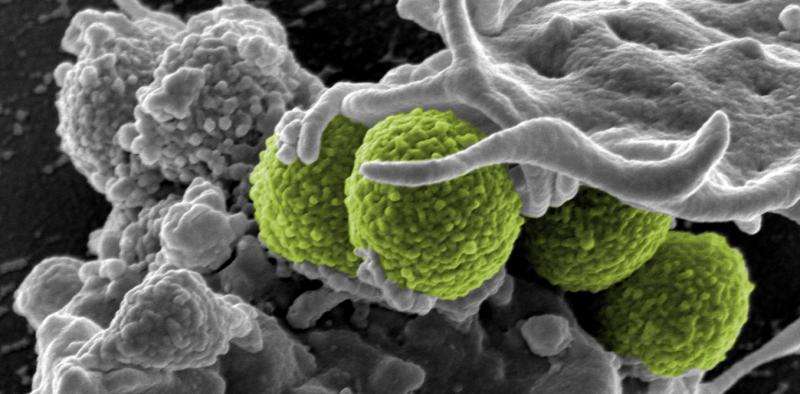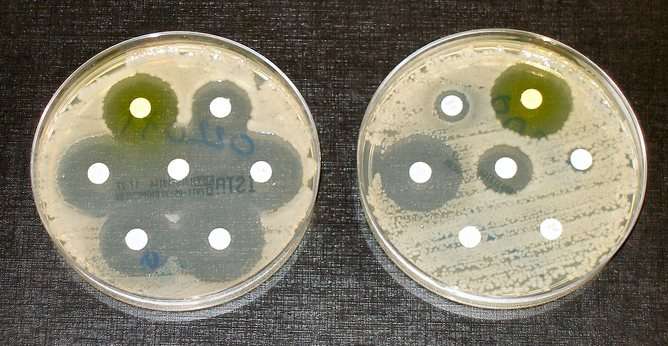'Resistance-proof' antibiotics may never exist – but there are some promising alternatives

Few will have missed the warnings about the increasing threat from antibiotic resistance and the dire predictions of a looming "post-antibiotic apocalypse". And we're right to worry: bugs that are resistant to commonly used antibiotics are affecting our ability to treat and manage infectious disease. Intuitively, the most obvious strategy to tackle this crisis, and to stay one step ahead of the bacteria, would be to identify and develop new antibiotics.
Ideally these new compounds would kill the bacteria, without any side effects to the host, and operate in a way that makes it impossible for the bacteria to evolve resistance to them. Yet we have so far failed to produce such a drug. Given the amazing ability of bacteria to adapt and evolve, is it even possible?
The evolutionary history of resistance
The vast majority of drugs used today have been produced by modifying the products of microorganisms that have been around for millions of years. Soil, which harbours plenty of ecological complexity and genetic diversity, is by far the most important natural habitat for producing antibiotics. In such an environment, the antibiotic producers live in densely packed communities with all kinds of other bacteria. This means that their neighbours have had millions of years to invent creative measures to avoid death from antibiotic action.
Resistance is therefore a very old phenomenon – existing long before we started harnessing antibiotics to manage disease. Indeed, genome sequencing of the oldest bacterial strain to be stored in a culture collection – isolated during the Great War from a soldier who died of dysentery – revealed this strain was resistant to penicillin and erythromycin. This was despite the fact that these drugs were not administered until many years later. Even more strikingly, genes very similar to contemporary resistance genes have been detected in 30,000-year-old ice core samples.

This can partly explain how resistance to antibiotic drugs has evolved so quickly. What's more, under certain circumstances, bacteria can also invent resistance from scratch without acquiring pre-existing resistance genes. When exposed to a certain antibiotic for a long time, bacteria will eventually pick up a mutation that will render them resistant.
However, many antibiotics attack bacterial structures that are not encoded by a single gene, but rather produced via more complex pathways. For example, the cell wall, which gives most bacterial cells their shape and stability, is produced via a biosynthetic pathway involving a molecule known as Lipid II. This process is a very popular target for antibiotics like vancomycin, which works by binding to Lipid II and thereby stopping the bacteria from producing their cell wall.
Indeed, when this antibiotic was discovered in the 1950s it was assumed to be "resistance-proof". That's because the Lipid II molecule is produced by a series of enzymes and therefore cannot be changed by a simple mutation.
Although it took several decades before the first infections with resistant bacteria appeared, since the 1980s it has become such a central problem in modern healthcare that vancomycin-resistant enterococci (VRE) have become known as one of the new "superbugs". So how did that happen? It turned out that these VRE bacteria had somehow "learned" to make a slightly different form of Lipid II to which the antibiotic cannot bind.
Evolution-proof drugs?
This example illustrates that all it takes is time and a little selection pressure for evolution to pick out the bacteria best suited to any new condition. Survival of the fittest is a well known principle of evolutionary theory, and it applies to antibiotic-resistant bacteria just as much as to plants and animals.
Is it therefore just a question of time until we run out of ways to treat infectious diseases? Well, it does seem unlikely that we will ever find an antibiotic that is completely resistance-proof, even against newly discovered drugs. Of course this doesn't mean we should give up our search. Promising new compounds have been discovered recently, and new drugs will at least help to stem the tide for a while.
But for a truly evolution-proof drug, we may need to look elsewhere – and fortunately there are options. One promising recent development are "anti-virulence drugs". Instead of killing the bacteria, these drugs aim to merely disarm them, blocking their ability to cause disease. Because the bacteria will still be able to survive normally in the presence of such drugs, it is thought that there should be no or only very weak selection pressure for the evolution of drug resistance.
And of course there is also the obvious point of reducing our use of antibiotics. This can be achieved by tighter regulations, especially on antibiotic use in farming, but it can also be achieved by reducing our need for antibiotics. Improved hygiene in hospitals, increased sanitation, better diet and vaccine development have historically all contributed hugely to the fight against bacteria. These will remain at least as important as the search for new antibiotics in the future.
Source: The Conversation
This article was originally published on The Conversation. Read the original article.
![]()





















